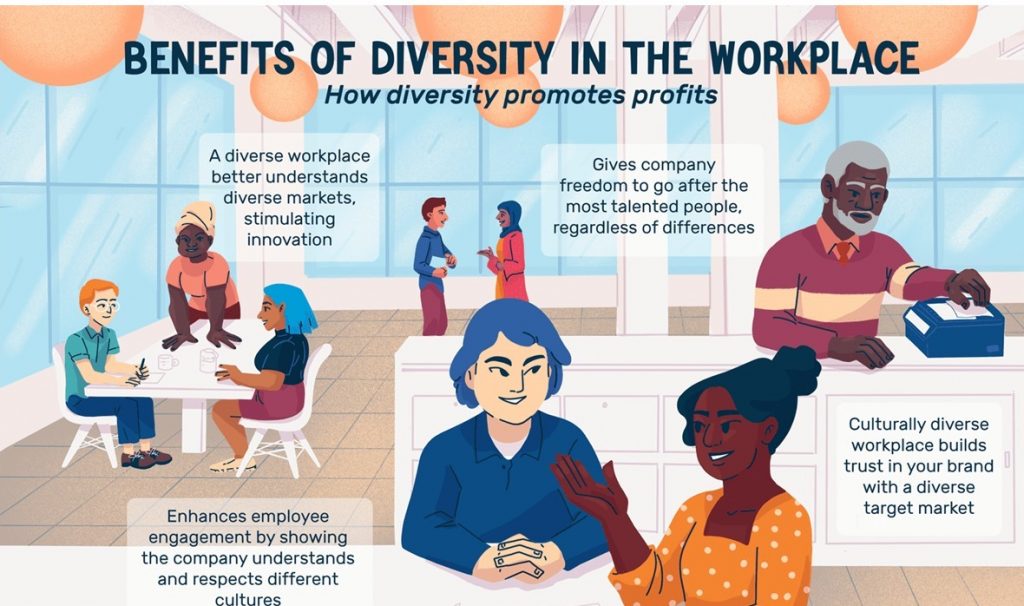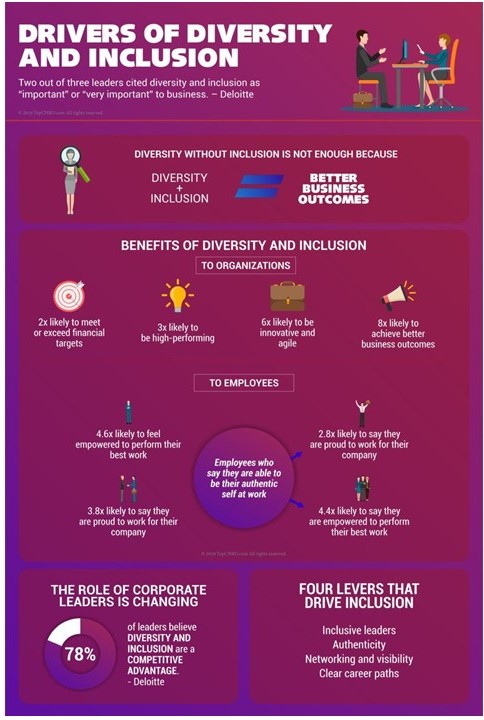Unit 46: Intercultural Communication
Learning Objectives
 After reviewing this information, you will be able to
After reviewing this information, you will be able to
-
-
- define intercultural communication in the context of professional interactions.
- identify several benefits of intercultural communication
- identify the five dimensions of cultural
- explain strategies for how to establish and maintain friendly professional relations with people from different cultures
-
Introduction
All communication is intercultural. The term “intercultural communication” may conjure in your mind a picture of two people from different continents speaking or writing to one another. Considering the vast size of Canada and wide variety of cultures from the west coast to the Maritimes, however, or from northern communities to the border-lining south, or from Indigenous peoples to first-generation immigrants, much of the communication in Canada is intercultural. You can hear it in the diverse accents across the provinces and even within a province from urban to suburban to rural cultures. Every culture you’ve ever participated in has left its mark on you with a set of perspectives and values that shape your worldview and behaviour. Still, we are a cohesive rather than a fractured people, which suggests we can all get along with one another despite our cultural differences.
Always approach intercultural communication as an opportunity to overcome cultural differences and achieve the cross-cultural understanding you need to be a better person and do your job effectively in a multicultural environment. Engaging with other cultures with simplistic, preconceived notions informed by media stereotypes reducing everyone in a culture to a one-dimensional character or prop will lead you into serious error. Intercultural communication requires openness to difference, patience in overcoming cultural and language barriers, and the desire to learn about other cultures and points of view.
If your work brings you into contact with cultures that you know little about, forget the stereotypes and learn about their culture by both researching it and talking to them respectfully. Along these lines, this chapter provides some basic principles for conducting intercultural communication in the modern workplace by considering what you share in common with the people you interact with, what to look for in terms of cultural differences, and how to act in either case.
Common Cultural Characteristics
Culture involves beliefs, attitudes, values, and traditions that are shared by a group of people. Thus, we must consider more than the clothes we wear, the movies we watch, or the video games we play as the only representation of a culture. Culture also involves the psychological aspects of our expectations of the communication context. For example, if we are raised in a culture where males speak while females are expected to remain silent, the context of the communication interaction governs behavior, which in itself is a representation of culture. From the choice of words (message), to how we communicate (in person, or by e-mail), to how we acknowledge understanding with a nod or a glance (nonverbal feedback), to the internal and external interference, all aspects of communication are influenced by culture.
Culture is part of the very fabric of our thought, and we cannot separate ourselves from it, even as we leave home, defining ourselves anew in work and achievements. Every business or organization has a culture, and within what may be considered a global culture, there are many co-cultures. For example, consider the difference between the sales and accounting departments in a corporation. We can quickly see two distinct groups with their own symbols, vocabulary, and values. Within each group, there may also be smaller groups, and each member of each department comes from a distinct background that in itself influences behavior and interaction.
Ethnocentrism is the tendency to view other cultures as inferior to one’s own. Having pride in your culture can be healthy, but history has taught us that having a predisposition to discount other cultures simply because they are different can be hurtful, damaging, and dangerous. Ethnocentrism makes us far less likely to be able to bridge the gap with others and often increases intolerance of difference. Business and industry are no longer regional, and in your career, you will necessarily cross borders, languages, and cultures. You will need tolerance, understanding, patience, and openness to difference. A skilled business communicator knows that the process of learning is never complete, and being open to new ideas is a key strategy for success.

5 Dimensions of Culture
Successfully communicating across cultures requires understanding and respecting how the culture or cultures you represent differ from those of the people you’re communicating with. While you may think that you should just follow the golden rule and treat everyone else the way you would like to be treated yourself, the more you travel to distant lands, the more you realize that cultural conventions and expectations for how people would like to be treated are relative. One culture will place a high value on a friendly handshake and eye contact, while you would come off as aggressive or awkward if you did those things well in another.
Though you can’t be expected to know every little custom across the planet, having a general sense of large-scale cultural differences and a willingness to learn the details as necessary can save you from embarrassing yourself or offending people of different cultures when interacting with them. An open approach to cultural differences can also impress your audiences in ways favourable to your reputation and the organization you represent. With this goal in mind, let’s examine five broad categories of culture.
Context
Cultures can be divided into two distinct context categories: low and high context cultures. Low context cultures are said to logical, analytical and action oriented. A direct and straightforward communication style tends to be the communication pattern. Countries in North America and many European countries are considered low-context in orientation. High context cultures on the other hand are more intuitive in their communication style. Non-verbal communication: voice tone, eye contact, gestures, and posture, plays a more important part in communication. Speakers use indirect communication to communicate messages. Asian, African, and many Latin American cultures are considered high-context cultures.
Individualism
Individualism refers to a culture’s attitude towards independence and control. People in low context cultures tend to be very individualistic, that is, they value independence, freedom, initiative, personal responsibility and resist many forms of control. Competition and personal achievement is hardwired into the culture as people try to stand out from one another. On the other hand, people in high context cultures tend to be group oriented. Acceptance of group values, duties, and responsibilities is encouraged. High context cultures resist independence, freedom, and competition. People would rather blend than stand out.
Formality
Formality is the degree to which a culture places emphasis on tradition, ceremony, and social rules. In low context cultures, tradition is not an important value. This lack of value is exhibited in a more casual business attire, use of informal language to address superiors and the elderly, and lack of rituals. In low context cultures, social mobility is more possible and likely to occur. On the other hand, high context cultures value tradition. This value is exhibited is the wearing of formal business attire, the use of formal greetings with superiors and the elderly, and observance of rituals. In high context cultures, social mobility is often very difficult and unlikely to occur.
Communication Style
Communication style refers to the value place on verbal or non-verbal communication. Low context cultures place a high degree of importance on verbal communication. Low context cultures take words literally and value straightforward communication, words are suppose to mean what they say. On the other hand, high context cultures place more importance on the surrounding context than on the actual words. Words are only part of the message, and a lesser part of the message than all the other information connected to the message.
Time Orientation
Time orientation refers to the degree to which a culture considers time limited. In low context cultures, time is limited and considered a commodity. Time is connected to productivity, efficiency, and money. The saying “time is money” is part of commonplace. Waiting is wasting time and considered rude. On the other hand, time is unlimited in high context cultures. Time is a resource to be enjoyed. Decisions take time, meetings do not always start on time, and it is not considered rude to keep someone waiting.
Conclusion
Harmony and acceptance do not happen automatically within a culturally diverse work environment. An organization must put forth real effort and commitment to creating an inclusive workplace. However, the benefits of inclusive work environment include increased productivity and profitability.
Intercultural communication is a fascinating area of study within business communication, and it is essential to your success, particularly as it relates to the importance of considering multiple points of view. If you tend to dismiss ideas or views that are “unalike culturally,” you will find it challenging to learn about diverse cultures. If you cannot learn, how can you grow and be successful?

Exercises
 1. When meeting businesspeople from other countries, you will feel more comfortable if you know the basics of business etiquette and intercultural communication, such as greetings, attire, or dos and don’ts. Visit some online sites about international business etiquette and answer the following questions:
1. When meeting businesspeople from other countries, you will feel more comfortable if you know the basics of business etiquette and intercultural communication, such as greetings, attire, or dos and don’ts. Visit some online sites about international business etiquette and answer the following questions:
- How do people greet each other in Australia, India, Japan, Korea, the Netherlands, and Spain?
- In what countries is is important to keep a certain distance from the person you are greeting?
- In what countries is a kiss on the check an appropriate greeting?
References
Guffey, M., Loewry, D., & Griffin, E. (2019). Business communication: Process and product (6th ed.). Toronto, ON: Nelson Education. Retrieved from http://www.cengage.com/cgi-wadsworth/course_products_wp.pl?fid=M20b&product_isbn_issn=9780176531393&template=NELSON
Institute of Cultural Diversity. (2019). Why is culture so important in the workplace. Retrieved from https://instituteofculturalintelligence.com/2019/07/23/why-is-cultural-diversity-important-in-the-workplace/
Skills Boosters. (2014). Cultural awareness in the workplace [Video]. Youtube. https://www.youtube.com/watch?v=4Gwgls50J30
The Balance. (2020). Cultural diversity in the workplace. Retrieved from https://www.thebalance.com/cultural-diversity-3306201
The way a culture perceives the world around them which influences its interaction with others
Communication between or among people who have different cultural traditions.
The way we understand reality, largely based on experience
Learned habit to respond to something
Long lasting concept of what is right and wrong.
Basic foundation that guides or motivates beliefs and actions.
The passing of customs and beliefs from one generation to another.
A culture that exists within a larger cultural context (e.g. Jews, Christians, Muslims, etc.)

